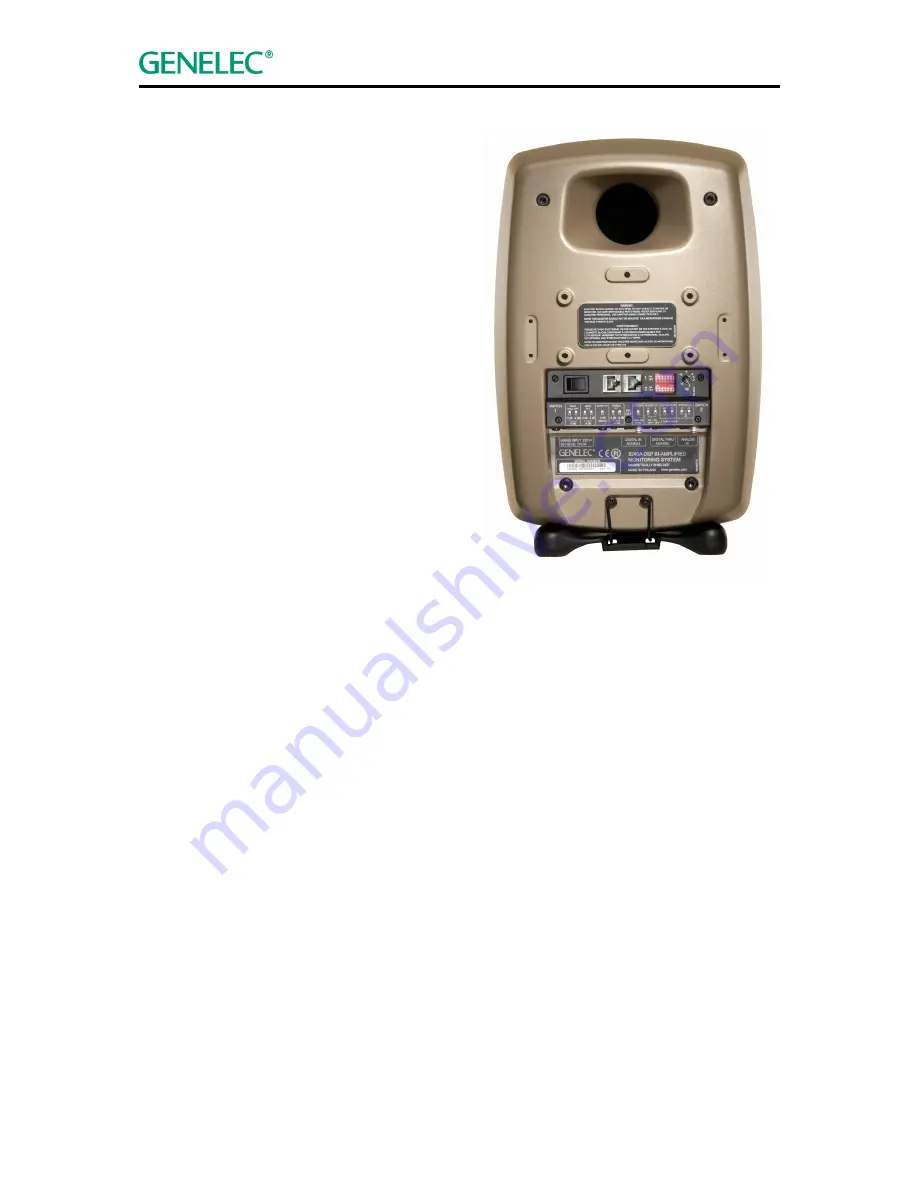
© Genelec Oy, 2006. Published in Resolution Magazine, Sweet Spot, p 46-47, April 2006, V5.3
2
first active speaker systems with DSP
crossovers appeared in the consumer world
around that time. Typically the frequency
response was ruler flat but perceived
subjective performance was not as good as
one could expect. At the same time,
understanding of the criteria for excellent
subjective performance was somewhat limited.
Now it has become evident that excellent on
axis performance is not sufficient; the off axis
and power responses are also equally
important. Equalization of complicated errors is
possible, but the problem of the listening area
remains: optimizing response at one point in
space often means less desirable response
somewhere else. The old wisdom is true also
here: it is better to prevent the errors from
happening than correct them afterwards.
Therefore the starting point should be pretty
much as good as it can be.
So what are the benefits of using elaborate
technologies? Steep crossover filters that can
improve directional and off-axis performance
are easy to construct with DSP. Equalization of
driver unit magnitude and phase responses is
also straight-forward but if the starting points
are excellent the audible improvements may
be small. However, correcting the room
response is a very important feature, which
can clearly improve the perceived response. If
more of the possible DSP potential is to be
exploited, the room response correction
function needs a measurement system,
including signal generator, microphone,
software to analyze the results in terms of their
audible effects and a way to inject the
measurement results into the monitor.
Technically this is straightforward engineering
and psychoacoustics, but from the average
user’s point of view such procedure should be
automated.
Conversion of the market requirements to a
complete product specification is always a
challenging task. Inclusion of some features
may exclude some others, but the end result
should match most of the real world needs. As
said earlier, the starting point should be as
good as possible. In our case the recently
introduced 8000 series monitor design avoids
all the common aberrations related to
distortions, diffraction and uneven directivity,
and hence it forms an ideal platform for using
DSP in crossover filters and room response
correction. Hardware and electro-acoustic
design were thus quite ready for 8240A and
8250A, the DSP counterparts for 8040A and
8050A.
The change from stereo to multichannel
productions in the analogue and digital
production environment has caused major
technology changes and has created new
requirements for console manufacturers.
However, it will take some time before the
installed base of analogue and digital mixing
consoles have extended multichannel monitor
routing and the appropriate volume controls.
As the installed base of mixing consoles have
different monitoring outputs, the DSP
loudspeaker systems need both analogue and
digital inputs. There are many options for
transmitting digital audio but to adhere to an
industry standard, we chose AES/EBU. The
obvious solution for the requirements of
monitor grouping, global volume control and
other similar functions, as well as automated






















